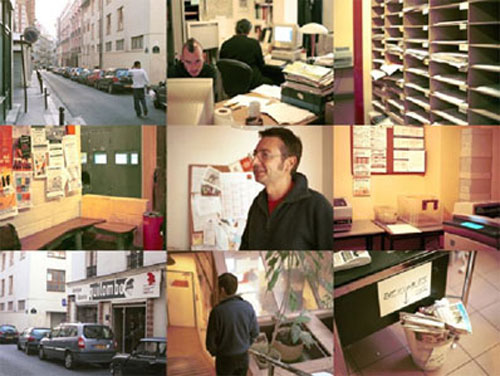CICP

Centre International de Culture Populaire
Key Innovation
The “CICP” is an association, which give to other associations the technical, logistical and material means to practise their activities.
Problematic background and context
The CICP was founded in 1976, period of the decolonisation, by the “CEDETIM” in order to enable associations working on international solidarity. They helped them, by giving them the technical, material and logistical support they needed for their work. A group of 500 persons called SCI (“société civile immobilière”), who were politically involved in this process, was organised by the “CEDETIM” in order to buy a small building. In its first years of existence, the CICP was situated in the “rue de Nanteuil” in Paris. But with the need of more space it had to move in a bigger building and is now situated at the “21ter, rue Voltaire”, in the 11th “arrondissement” of Paris. The first aim of CICP was, to support associations, which worked on international solidarity. But now there are several other associations taking part in the CICP. They are all working on subjects, which are in relation to the human being (feminism, fair trade, alternative internet…).
Solution description
The CICP gives to associations the opportunity to rent offices and/or to have mailboxes in the house, they also propose meeting rooms, places to project movies, tools to organise the activities (a photocopying machine, informatics tools…) and the associations have to share these equipments (the meeting rooms are also sometimes rented to other organisations). Every new “in-coming” association has first to be accepted by the others associations working in the CICP (in order to avoid contradictory works in the house, or for example, fascists associations). Then, when the association is accepted, the CICP respect its objectives, points of view, political choices and ways of thinking, they don’t intervene in their work. There are about 80 associations, which are members of the CICP: about 30 have their offices in the house and the others have mailboxes. The CICP is not only a good tool for the associations; it is also a place where they can have direct exchanges.
Timeframe
since 1976
Revenue/costs model
The CICP is functioning without any subventions of the state. The CICP pays its wageworkers with the money given by the associations (for the rent). The associations paying monthly a participation and earn money as well by renting rooms to other organisations for a short period. The associations, which are taking place in the CICP, can have their own standpoint about financial arrangements.
Social evaluation
The CICP is grouping many associations in the same place. The consequence is that the associations put in common their energy, experiences and knowledge in order to be more efficient. It also creates a kind of family taste, which gives to this sort of community the opportunity to have deep informal debates. People coming to the CICP are surprised to find so many associations in the same place, most of the time they are looking for only one of them. They discover the real meaning of this space. For the people who already know the CICP it is a place where they find a la lot of different dynamics.
Environmental evaluation
This organisation has all the environmental benefits that “co-housing” bares: it reduces the transports for the meetings (it is a kind of “all-in-one” place) and it also reduces the consumption of energy by the share of spaces. We also noticed that the members of the CICP share certain ways of thinking, which are both international solidarity and environmental matters: they sort their waste!
Economical evaluation
The associations have to pay a contribution to the CICP for the maintenance. The economical problem, which could be encountered is that, being a community, they are concerned by all the financial difficulties the associations can have, so when an association can’t pay the rent they are not so strict on the delays.
Authors
Goliath Dyèvre, Milamem Abderamane-Dillah / ENSCI Les Ateliers / France